
IEEE Open Journal of the Communications Society
Scope & Guideline
Connecting Ideas, Bridging Gaps in Communication Science
Introduction
Aims and Scopes
- Wireless Communication Technologies:
The journal covers advancements in wireless communication technologies, including 5G, 6G, and beyond. This includes research on multiple access techniques, signal processing methods, and network architectures that enhance the capacity and reliability of wireless networks. - Machine Learning and AI in Communications:
There is a significant focus on the application of machine learning and artificial intelligence in communication systems. This includes algorithms for resource allocation, network optimization, and predictive modeling to improve communication efficiency and reduce latency. - Reconfigurable Intelligent Surfaces (RIS) and Smart Antennas:
The journal explores the use of reconfigurable intelligent surfaces and smart antennas in enhancing wireless communication performance. This includes studies on beamforming, channel estimation, and the integration of RIS in various communication scenarios. - Federated Learning and Edge Computing:
Research on federated learning and edge computing is prevalent, emphasizing decentralized data processing and machine learning approaches that improve communication systems' efficiency and data privacy. - Integration of Communication and Sensing:
The journal includes studies on integrated sensing and communication technologies, exploring how to leverage joint functionalities for improved network performance and resource utilization. - Security and Privacy in Communication Systems:
Security and privacy concerns in modern communication systems are critically examined, focusing on cryptographic techniques, secure communication protocols, and resilience against cyber threats. - Terahertz and Millimeter Wave Technologies:
Innovations in terahertz and millimeter wave communication technologies are a key area of focus, addressing challenges related to high-frequency communication and its applications in next-generation networks. - Network Slicing and Virtualization:
The journal discusses network slicing and virtualization techniques to enhance resource management and service delivery in heterogeneous network environments.
Trending and Emerging
- Integration of AI in Communications:
The application of artificial intelligence in communication systems is a rapidly growing area. This includes utilizing AI for network optimization, security enhancements, and predictive analytics to improve system performance. - Focus on 6G Technologies:
Research dedicated to the development of 6G technologies is increasingly prominent, exploring new paradigms in wireless communication, including ultra-reliable low latency communication and enhanced mobile broadband. - Green and Sustainable Communication Solutions:
There is a rising trend towards research on energy-efficient communication systems and sustainability, focusing on reducing the carbon footprint of communication networks and promoting eco-friendly technologies. - Quantum Communications and Security:
Quantum communications are emerging as a significant theme, with research exploring quantum key distribution and secure communication protocols that leverage quantum mechanics. - Advanced Network Management Techniques:
The trend towards advanced network management techniques, such as network slicing and software-defined networking, is evident, reflecting the need for flexible and efficient resource allocation in communication networks. - Collaborative and Edge Computing Paradigms:
Collaborative and edge computing paradigms are gaining attention, emphasizing the need for decentralized processing and data sharing to enhance the performance of communication systems in real-time. - Internet of Things (IoT) and Smart Systems:
Research on the Internet of Things and smart communication systems is rapidly expanding, focusing on the integration of IoT devices and communication networks to enable smart cities and automation.
Declining or Waning
- Traditional Circuit-Based Communication Models:
Research centered around traditional circuit-based communication models has decreased as the focus shifts towards more advanced techniques such as software-defined networking and machine learning approaches. - Legacy Network Architectures:
Studies on legacy network architectures, particularly those tied to 3G and earlier technologies, have waned as the industry and academia move towards exploring 5G and future networks. - Basic Signal Processing Techniques:
While signal processing remains important, basic techniques are being overshadowed by more complex and adaptive methods leveraging AI and machine learning, resulting in fewer publications in this area. - Fixed-Line Communication Systems:
Research on fixed-line communication systems has diminished as wireless technologies gain predominance, reflecting the industry's shift towards mobile and flexible communication solutions. - Theoretical Models Without Practical Applications:
There has been a noticeable decline in purely theoretical research models that do not have clear practical applications, as the journal increasingly emphasizes applied research with real-world impacts.
Similar Journals
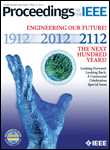
PROCEEDINGS OF THE IEEE
Driving Technological Progress through Scholarly ExcellencePROCEEDINGS OF THE IEEE, published by the IEEE-Institute of Electrical and Electronics Engineers Inc, stands as a premier journal within the fields of Computer Science and Electrical and Electronic Engineering. Since its inception in 1963, it has provided a platform for cutting-edge research and developments, showcasing innovative studies and breakthrough technologies that influence academia and industry alike. With an impressive Q1 ranking in both fields according to the latest quartiles, this journal ranks among the top in its categories, holding a prestigious spot in the Scopus metrics—ranking 1st in General Computer Science and 4th in Electrical and Electronic Engineering. Researchers, professionals, and students benefit from its comprehensive scope that includes a wide range of topics from algorithms and computing systems to circuit design and network technologies. Additionally, though not available as an open-access publication, its significant impact factor signifies its role in advancing scholarly dialogue and innovation in these fast-evolving fields. With contributions from leading experts and a commitment to high-quality research, the PROCEEDINGS OF THE IEEE continues to be an essential resource for anyone invested in technological progress and scientific inquiry.
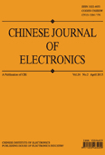
CHINESE JOURNAL OF ELECTRONICS
Innovating Solutions in Electrical EngineeringThe CHINESE JOURNAL OF ELECTRONICS is a distinguished peer-reviewed publication in the fields of electrical and electronic engineering and applied mathematics, published by the reputable IEEE-Institute of Electrical and Electronics Engineers Inc. Based in the United States, this journal has been a significant platform for sharing innovative research since its inception in 1996. With a commendable impact factor, it is ranked Q3 in both applied mathematics and electrical engineering categories, reflecting its relevance and quality within the academic community. The journal aims to disseminate high-quality research, foster interdisciplinary approaches, and provide a forum for discussions on advancements and applications in electronics and associated fields. Although it currently does not offer open access, the CHINESE JOURNAL OF ELECTRONICS remains a key resource for researchers, professionals, and students seeking to stay at the forefront of technological developments. Its Scopus rankings—170th in applied mathematics and 365th in electrical engineering—highlight its credibility and importance in advancing knowledge and innovation.

WIRELESS NETWORKS
Illuminating the Path of Wireless InnovationWIRELESS NETWORKS is a prestigious journal published by Springer, focusing on cutting-edge research in the domains of wireless communication, computer networks, and information systems. Established in 1995 and set to converge its influential contributions until 2024, this journal has rapidly ascended to a Q2 category ranking in the fields of Computer Networks and Communications, Electrical and Electronic Engineering, and Information Systems, reflecting its significant role in advancing knowledge and innovation—ranked 75th, 151st, and 84th respectively in their fields by Scopus. Researchers and professionals alike value its contribution to the discourse on wireless technologies, making it a vital resource for professionals and students eager to stay abreast of the latest trends and findings. Although it does not offer open access, the insights gleaned from its articles are invaluable for tackling the challenges of modern communications and ensuring the efficient use of wireless networks.
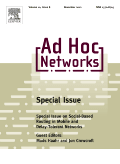
Ad Hoc Networks
Connecting Ideas, Empowering TechnologiesAd Hoc Networks, published by Elsevier, is a leading journal in the fields of Computer Networks and Communications, Hardware and Architecture, and Software, with an impressive Q1 ranking in all three categories as of 2023. With an ISSN of 1570-8705 and an E-ISSN of 1570-8713, this journal offers a robust platform for disseminating cutting-edge research and advancements in network technologies, emphasizing the importance of efficient communication protocols and architectures in contemporary computing environments. Operating from the Netherlands, it has emerged as a pivotal resource for researchers and professionals seeking to explore novel methodologies, frameworks, and applications within the domain of ad hoc and wireless networks. The journal's high impact factor and Scopus rankings—44th in Computer Networks and Communications, 20th in Hardware and Architecture, and 53rd in Software—underscore its relevance and authority in the academic community. Ad Hoc Networks is committed to fostering a deeper understanding of the complexities and innovations in network design, making it an essential read for anyone invested in the future of communication technology.

Infocommunications Journal
Shaping the Future of Technology and CommunicationInfocommunications Journal, published by the SCIENTIFIC ASSOCIATION INFOCOMMUNICATIONS, stands as a vital resource within the fields of Computer Science and Electrical and Electronic Engineering. Since its inception in 2011, this journal has consistently contributed to the discourse surrounding innovations and research trends in these dynamic disciplines, culminating in a converged operational span through 2024. With an ISSN of 2061-2079 and an E-ISSN of 2061-2125, it is indexed in Scopus, showcasing impressive rankings within its categories, notably a Q3 classification in both Computer Science (miscellaneous) and Electrical and Electronic Engineering as of 2023. Although the journal operates under a non-open access model, its contributions are nonetheless essential for researchers and professionals seeking to advance their knowledge and practice. Situated in Budapest, Hungary, at Kossuth Lajos Square 6-8, 1055, the Infocommunications Journal is committed to fostering a rich scholarly exchange, making it an indispensable platform for those invested in the frontiers of technology and communication.
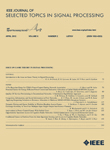
IEEE Journal of Selected Topics in Signal Processing
Unlocking the Potential of Electrical Engineering InnovationsIEEE Journal of Selected Topics in Signal Processing is a premier academic publication dedicated to the advancement of knowledge in the field of signal processing. Published by IEEE-INST ELECTRICAL ELECTRONICS ENGINEERS INC, the journal boasts an impressive impact factor that places it in the top tier of its category; ranked Q1 in both Electrical and Electronic Engineering and Signal Processing for 2023. Given its esteemed standing, the journal serves as a vital resource for researchers, professionals, and students alike, providing cutting-edge insights and developments that shape the future of signal processing. The journal encompasses a wide array of topics relevant to the evolving landscapes of electrical engineering and computer science, with particular significance in innovative applications and methodologies. As a platform for disseminating high-quality research, this journal remains essential for those seeking to stay at the forefront of this dynamic field. You can explore the latest contributions and findings, benefiting from the journal's influential status in the realm of signal processing.

EURASIP Journal on Wireless Communications and Networking
Connecting Ideas, Transforming NetworksThe EURASIP Journal on Wireless Communications and Networking, published by Springer, stands as a pivotal platform dedicated to advancing the field of wireless communications and networking. With an ISSN of 1687-1472 and E-ISSN of 1687-1499, this Open Access journal has been disseminating high-quality research since 2004, ensuring broad accessibility for scholars and professionals worldwide. Maintaining an esteemed position in the academic community, it is classified in the Q2 quartile for 2023 across critical categories including Computer Networks and Communications, Computer Science Applications, and Signal Processing. The journal's performance is reflected in its Scopus rankings, which place it in the 73rd percentile for Computer Networks and Communications and the 72nd percentile for both Computer Science Applications and Signal Processing. With a focus on innovative research and practical applications, the EURASIP Journal is an essential resource for anyone seeking to contribute to or stay informed in the dynamic landscape of wireless communication technology.
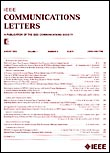
IEEE COMMUNICATIONS LETTERS
Exploring the Nexus of Theory and ApplicationIEEE Communications Letters, published by the esteemed IEEE - Institute of Electrical and Electronics Engineers, is a leading journal in the fields of Computer Science Applications, Electrical and Electronic Engineering, and Modeling and Simulation. Since its inception in 1997 and continuing through to 2024, this journal has consistently ranked in the prestigious Q1 quartile across its categories, reflecting its high quality and substantial impact in the academic community. With an impressive Scopus rank, particularly standing at #24 in Mathematics - Modeling and Simulation, the journal serves as an essential resource for researchers, professionals, and students eager to stay at the forefront of innovative communications technologies. Although it does not offer open access, the journal ensures rigorous peer review and publication of concise, impactful articles that push the boundaries of research and application. Whether you’re involved in theoretical developments or practical implementations, IEEE Communications Letters provides critical insights that shape the future of engineering and technology.

Internet Technology Letters
Pioneering Research in AI and Communication Technologies.Internet Technology Letters, published by John Wiley & Sons Ltd, is a dynamic and rapidly evolving journal that focuses on the innovative applications and developments within the realms of Artificial Intelligence, Computer Networks and Communications, Information Systems, and Software. With its E-ISSN 2476-1508 and a defined convergence period from 2018 to 2024, this journal seeks to address emerging trends and critical challenges confronting the digital landscape today. Recognized in the Q3 quartile range across multiple computer science categories in 2023, it serves as a valuable resource for researchers, professionals, and students seeking to advance their knowledge and stay updated on significant technological advancements. While currently not an open-access journal, Internet Technology Letters holds a prominent position on platforms like Scopus, ranked within the middle percentiles, reflecting its contribution to the academic community. The journal aims to foster connectivity between academia and industry, encouraging submissions that promote interdisciplinary collaboration and innovation. By creating a platform for sharing groundbreaking research, Internet Technology Letters plays a crucial role in shaping future technological landscapes.
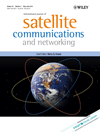
INTERNATIONAL JOURNAL OF SATELLITE COMMUNICATIONS AND NETWORKING
Pioneering Research in Global Networking SolutionsInternational Journal of Satellite Communications and Networking is a premier academic journal published by Wiley, dedicated to advancing knowledge in the fields of satellite communications and networking. With an ISSN of 1542-0973 and E-ISSN 1542-0981, this journal has been a significant contributor to the discourse surrounding electronic and media technologies since its inception in 2003. Recognized for its rigorous peer-review process, it has achieved notable rankings, placing in the Q2 and Q3 quartiles across various categories, highlighting its impact and relevance in the competitive domains of Engineering and Media Technology. Researchers, professionals, and students can benefit from access to cutting-edge research and innovations in satellite communications, as it ranks #18/63 in Engineering Media Technology and #323/797 in Electrical and Electronic Engineering. The journal's commitment to fostering a deeper understanding of networking technology makes it an essential resource for anyone looking to stay at the forefront of this rapidly evolving industry.